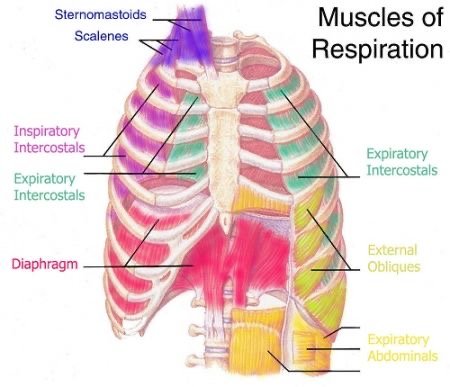Ending Neck Pain with Rolfing & Customized Movement- PART 1
When a client complains of neck tension or pain, one of the first aspects I observe is their breathing mechanics. Rather than solely addressing neck muscles, I focus on the interplay between the neck, shoulder, and rib cage.
In my Rolfing SI training at The Rolf Institute of Structural Integration, I learned the importance of ensuring clients can breathe fully without restrictions. The initial Rolfing® Structural Integration session examines the neck's connection to the shoulder and the shoulder's relation to the rib cage. This differentiation is crucial to prevent these structures from impeding proper breathing mechanics.
Proper breathing involves diaphragmatic breathing, where the diaphragm, a large muscle beneath the lungs, plays a central role. Inhaling deeply allows the diaphragm to descend, expanding the abdomen and lower lungs for efficient oxygen exchange.
Let’s get the party going in the Ribs as well!
Simultaneously, emphasis on ribcage expansion is vital. Visualize the ribs expanding outward during inhalation for a 360-degree breath, engaging intercostal muscles and optimizing lung capacity. Limited motion in the rib structures can impede proper breathing, addressed in Rolfing Session #1.
Rib expansion is essential for optimal respiratory function, involving coordination between ribs, intercostal muscles, and connective tissue. The diaphragm and intercostal muscles work together, with the diaphragm contracting and descending during inhalation, complemented by intercostal muscle expansion.
As a Certified Rolfer, I use bodywork techniques from the Rolfing® process, which helps unlock areas of the body that are restricted and impaired by tension or poor movement patterns. The goal is to enhance freedom of movement and improve the body’s range of motion, particularly around the neck, shoulders, and ribs.
Nora Colleen
Remove the Restrictions with Manual Therapy – Follow it with Individualized Movement Training
Exercises emphasizing rib expansion, like lateral breathing, enhance intercostal muscle flexibility and strength. This improves respiratory efficiency, ensuring better oxygenation and a balanced breathing pattern. After removing any restrictions through Rolfing sessions, I follow it with movements that my client practices, including exercises to strengthen the opposing muscles that have been inhibited from the restrictions. Typically, these are either the muscles involved in inhalation or the muscles involved in exhalation.
Check out this video I found on VIMEO showing the movement of the rib cage.
Diaphragms, such as the respiratory, pelvic, and cranial diaphragms, maintain pressure and support various functions. Rolfing Session #1 aims to balance the pelvis, crucial for pelvic diaphragm function. Coordinated diaphragmatic breathing promotes balanced pressure and contributes to overall well-being.
“Stop Sucking it in!” Hourglass Syndrome
"Hourglass Syndrome" refers to constant stomach muscle contraction that negatively impacts breathing and body function. Relaxing the stomach and practicing diaphragmatic breathing improves coordination between the diaphragm and abdominal muscles, enhancing respiratory function and maintaining pressure system balance.
Neglecting proper breathing mechanics, especially diaphragmatic breathing, leads to overactive secondary respiratory muscles, causing issues like neck tension, shallow breathing, increased energy expenditure, and poor posture. Retraining the body through diaphragmatic breathing exercises and strengthening the pelvic floor muscles supports healthier respiratory patterns.
Stay tuned for my favorite exercises in Part 2!



